10 Mailchimp alternatives for 2025 (and how to choose the best one for you)
 Matias, customer success
Matias, customer success
Mailchimp is a super popular name in email marketing. But, as decades of Hollywood high school movies have proven, being popular isn’t everything. You often find the true heroes of a story elsewhere.
With that in mind, this article will highlight 10 of the best Mailchimp alternatives to help you find your email marketing prom king or queen.
Why use a Mailchimp alternative?
You don’t get to be as popular as Mailchimp without having some good features. But, there are plenty of reasons why you might want to choose another tool.
4 of the most convincing reasons are:
Limited email sending: Mailchimp limits your email sending to 10 to 15 times your plan’s contact limit, depending on your plan. Other tools offer unlimited sending, even on base plans.
Restrictive free plan: Mailchimp’s free plan is limited to 500 contacts and 1,000 monthly email sends. Other tools offer way more.
High price: Several Mailchimp competitors offer lower-priced plans that often come with similar features.
Feature access: The depth of features on offer from Mailchimp is one of its major pros. But there are still features it doesn’t offer that you can find on other platforms.
And then there’s simply how you feel about the tool. Sometimes you like a tool, other times you don’t. Luckily, when it comes to email marketing there are plenty of alternatives if you’re not vibing with Mailchimp.
Our ranking methodology
These tools are all long-standing, proven competitors to Mailchimp. Each one is a decent tool with plenty of pros, cons, and stand-out features.
For these reviews, we assessed each tool using our 10+ years of experience as an email marketing leader, as well as plenty of time spent testing each one. We then highlighted each tool's pros and cons in comparison to Mailchimp so you can make an informed decision about the best choice for you.
Breakdown of the best Mailchimp alternatives
| Tool | When to switch? | When to avoid? | Monthly start price | Free plan |
|---|---|---|---|---|
| MailerLite | You’re a small business, entrepreneur or creator that likes Mailchimp’s features but wants an alternative that’s easier to use and has better pricing. | You need SMS sending or CRM. | $10 for 500 subscribers. | 1,000 subscribers/12,000 emails. |
| MailerSend | You need an alternative to Mailchimp’s transactional email solution | You need email marketing tools. | $1 per 1,000 emails after your first 3,000. | 3,000 emails per month. |
| GetResponse | You need a built-in learning management system or webinar software. | You need affordable e-commerce features. | $19 for 1,000 contacts. | 500 contacts/2,500 emails. |
| Klaviyo | You want advanced e-commerce tools, and have the budget to pay for them. | You don’t have a team who’ll make use of the advanced e-comm tools. | $20 for 500 contacts. | 250 subscribers/500 emails. |
| Campaign Monitor | You’re an agency that wants to provide clients with a white label dashboard. | You want to switch to a more affordable tool. | $12 for 500 contacts. | 30-day free trial. |
| Active Campaign | You want to automate emails based on website interaction. | You find Mailchimp’s automation features are plenty. | $15 for 1,000 contacts. | 14-day free trial. |
| Constant Contact | You want to leave Mailchimp but need SMS or social media management features. | You want similarly advanced email marketing features. | $12 for 500 subscribers. | 30-day free trial. |
| Brevo | You have a large list you contact infrequently. | You don’t want send-based pricing. | $12 for 500 contacts. | 100,000 contacts/300 daily emails. |
| Kit | You want to access in-platform tools for creators. | You’re a small business or e-commerce store. | $15 for 300 subscribers. | 10,000 subscriber plan for newsletters. |
| Substack | You want a free way to send a simple newsletter with built-in growth tools. | You want email marketing features. | Free with 10% commission on paid newsletters. | Free with 10% commission on paid newsletters. |
Best Mailchimp alternatives: 10 options to consider
Now you know what to look for, here is our list of the best Mailchimp competitors. We’ve highlighted pricing information and what makes each tool stand out.
MailerLite: The best Mailchimp alternative
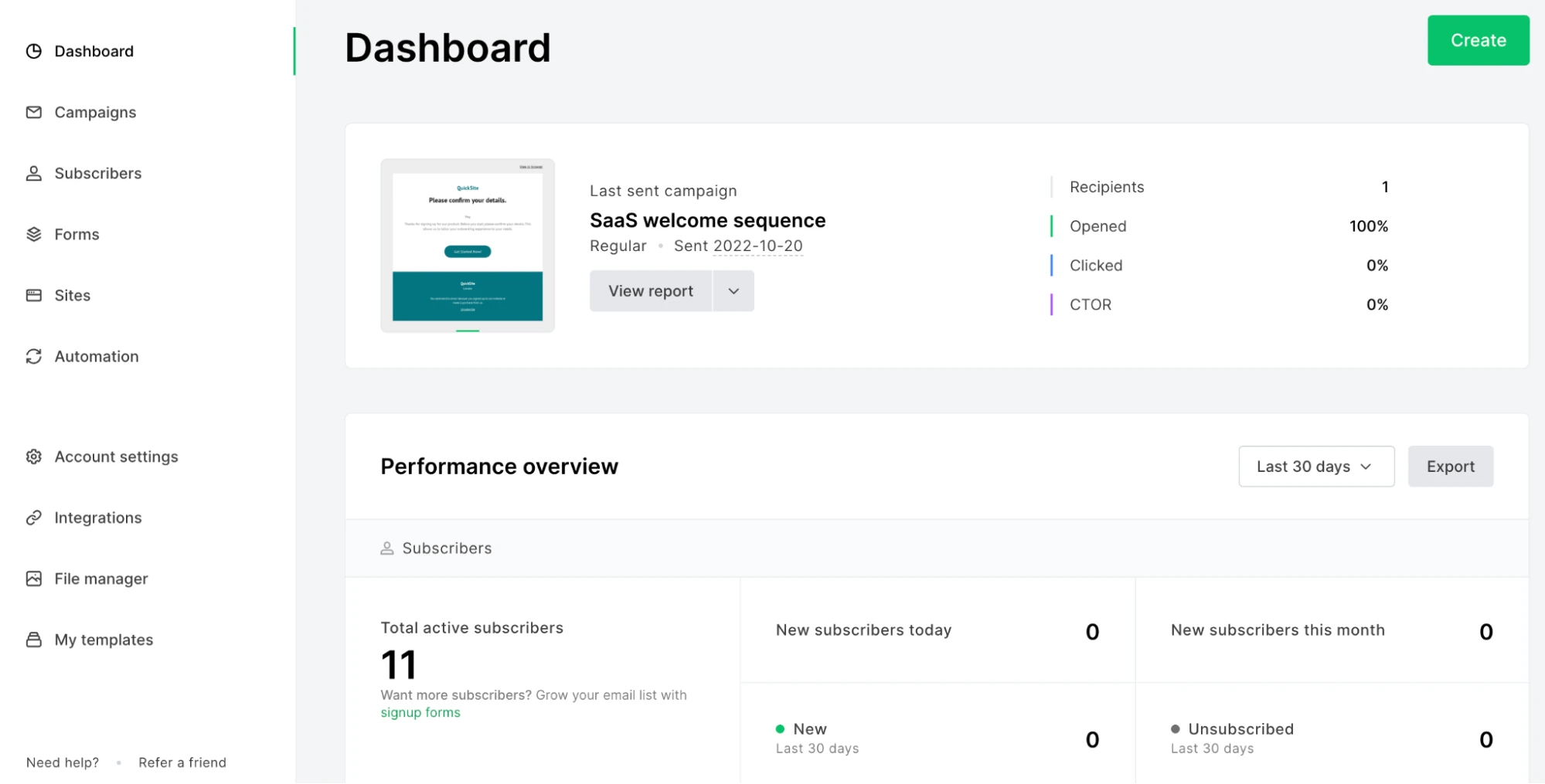
We obviously believe that MailerLite is the best Mailchimp alternative. But we’ve also got thousands of happy customers who’ve already migrated from Mailchimp to back up our claim. We provide all the features you need to deliver impactful email marketing campaigns and more.
All our features are packaged up in a super intuitive user interface that makes our software a pleasure to use, and generous pricing plans that make us a cheaper Mailchimp alternative. What's more, the free plan is available for up to 1,000 subscribers or 12,000 monthly emails, far more than the 1,000 free monthly emails offered by Mailchimp.
MailerLite also consistently ranks as one of the top tools for deliverability and is regularly recognized with top industry leader awards from independent organizations.
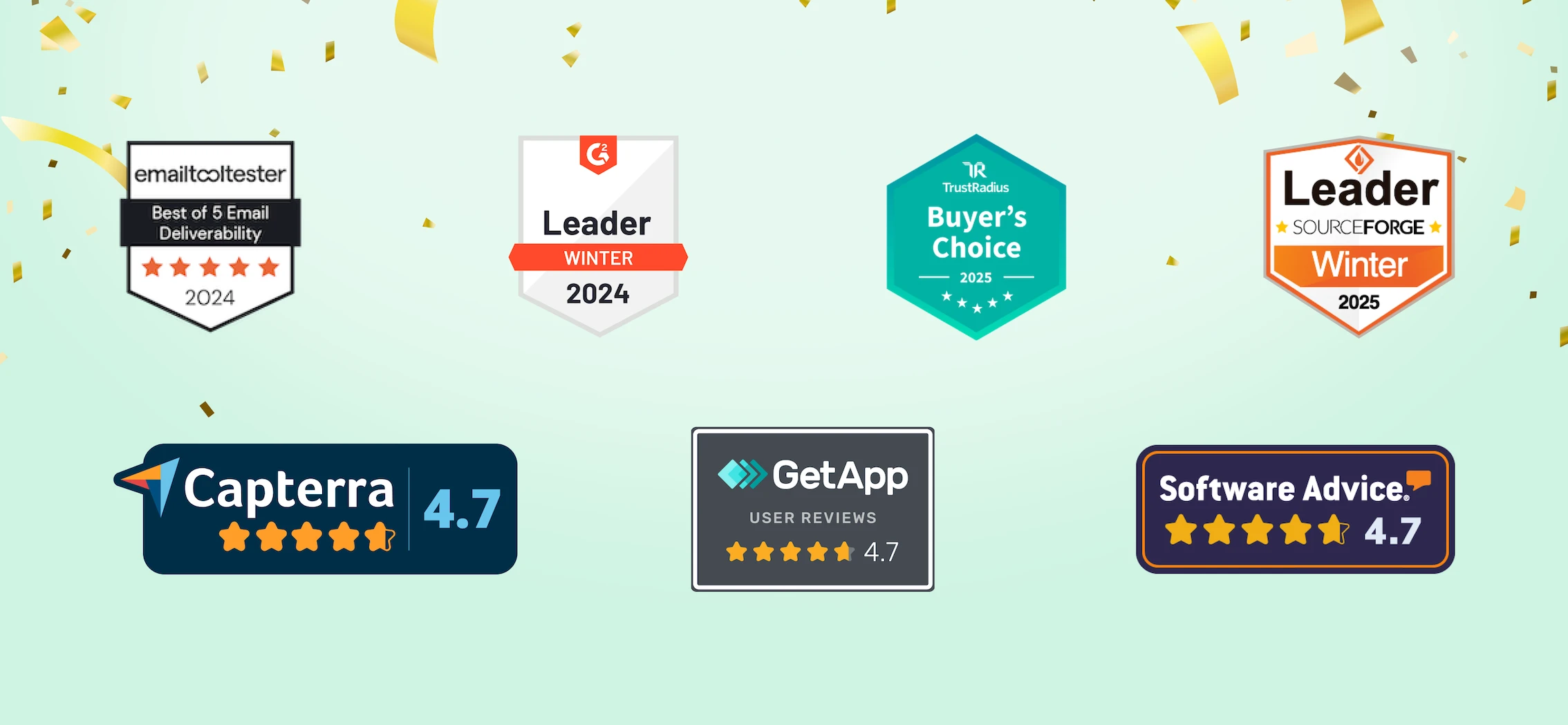
Why switch to MailerLite?
When you switch to MailerLite you’ll get the core Mailchimp features at a much cheaper price including automations, drag-and-drop and HTML editors, signup forms, A/B testing, RSS sending, websites, e-commerce integrations, a powerful API, and more.
Plus, you get plenty of extras that Mailchimp doesn’t offer such as mobile apps, resend to unopens, multi-step automations on the base plan, and promotional pop-ups that let you promote links on your website. You can even access transactional emails by connecting with MailerSend.
These features are all packaged in a more intuitive user interface that beginners and pros will find a pleasure to use. In fact, our email builder is one of the features we’re most proud of due to how easy it makes creating highly customized and beautiful emails.
Making the switch from Mailchimp to MailerLite is also easy. We have an integration that brings your contacts over in a couple of clicks, super helpful 24/7 customer support to help you get started, and a 30-day free trial of premium features so you can test if you like the tool.
Why choose another tool?
Consider another tool if there’s a specific feature you need that MailerLite doesn’t offer. For example, Active Campaign offers SMS sending and Klaviyo has more e-commerce automation and segmentation tools. Bear in mind that both these platforms are much more expensive.
500 subscribers: MailerLite costs $10 while Mailchimp costs $13
5,000 subscribers: MailerLite costs $50 while Mailchimp costs $75
10,000 subscribers: MailerLite costs $73 while Mailchimp costs $110
50,000 subscribers: MailerLite costs $289 while Mailchimp costs $385
Create your free MailerLite account
Sign up to test MailerLite and see for yourself why it is the best Mailchimp alternative. Migrate your subscribers in minutes with our prebuilt integration.
MailerSend: Best for transactional email
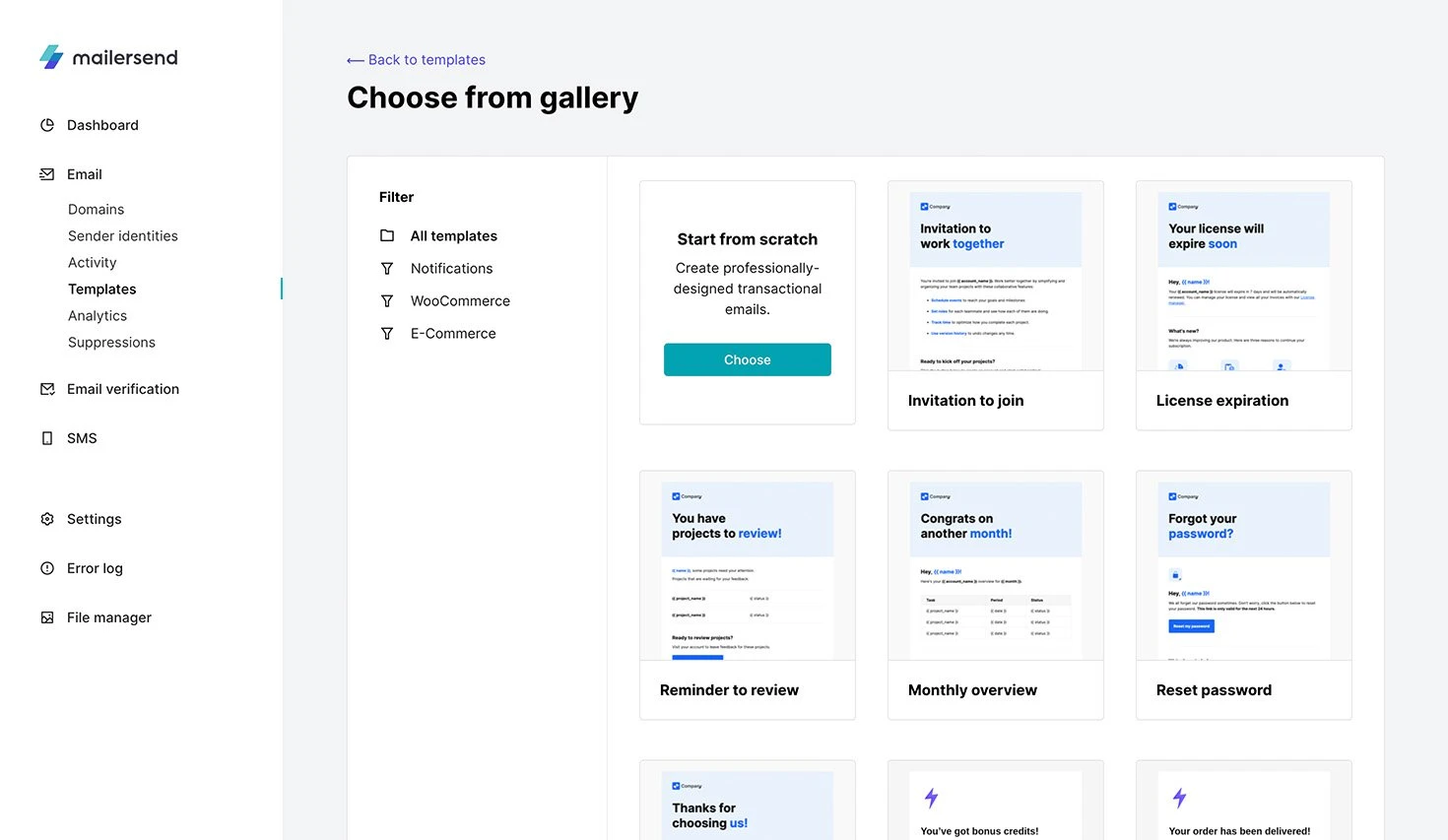
MailerSend is a powerful tool for a particular use case: sending transactional messages. These are non-promotional messages that go out based on actions customers take on your website or app.
Transactional emails and SMS are essential to the smooth running of your business. They include purchase confirmation emails, delivery updates, password reset emails, and 2FA text messages. MailerSend excels at this type of message thanks to its extremely high deliverability, easy setup via API or SMTP, inbound message processing, and more.
Why switch to MailerSend?
MailerSend is an alternative to Mailchimp’s transactional email service; it will not replace the service’s email marketing tools. MailerSend enables you to integrate email and SMS sending into your app or website thanks to its email API, templates, inbound routing, and SMS features. If that’s what you need, then MailerSend is the best option on this list.
Another benefit of MailerSend is that while Mailchimp’s transactional email tool requires you to have a Mailchimp email marketing plan, you can use MailerSend independently (although it does include SSO connectivity with MailerLite!).
Additionally, Mailchimp transactional email is more expensive than MailerSend, costing $20 per 25,000 email block. On the other hand, MailerSend’s free plan includes 3,000 emails per month and then costs $1 per additional 1,000 emails after that. Alternatively, subscription plans start from $35 per month ($28 when bought annually) for 50,000 emails and advanced features.
Why choose another tool?
Choose another tool if you don’t need a transactional messaging platform. If you’re looking for email marketing features, there are plenty of better options on this list.
MailerSend is free for 3,000 emails per month with additional emails charged at $1 per 1,000
MailerSend subscriptions start at $35 for 50,000 ($28 when billed annually) emails and $0.95 per 1,000 additional emails
Mailchimp transaction emails cost $20 per 25,000 email block. This decreases to $10 per block if you send over 4 million monthly emails
Mailchimp transactional emails require a Mailchimp monthly plan, which starts at $13
GetResponse: Best for online course creation
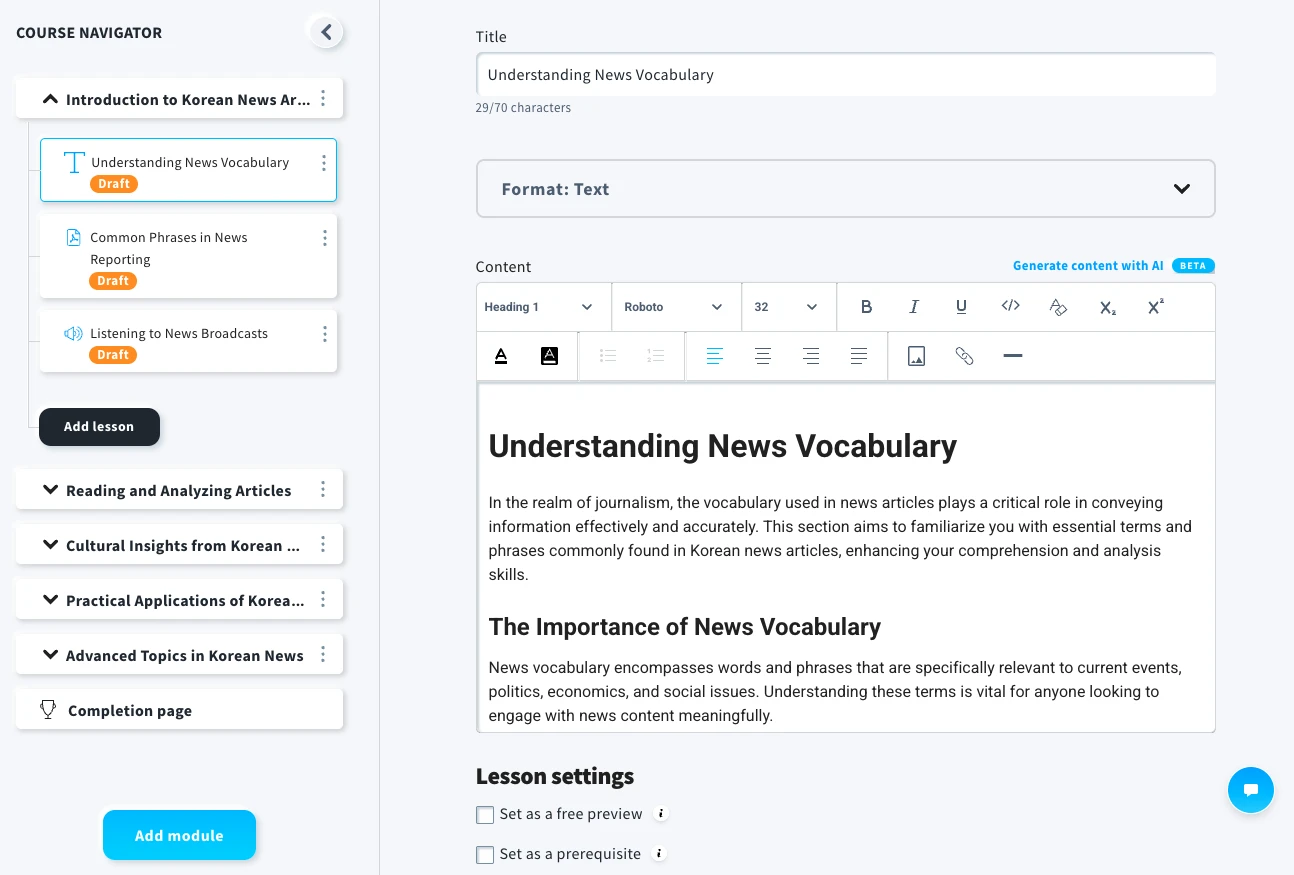
GetResponse is an email marketing all-rounder that stands out due to its easy-to-use website and landing page builder, course and webinar creation tools, and additional SMS marketing features. The main downside is that accessing the advanced features gets pricey fast.
Why switch to GetResponse?
GetResponse has several features that aren’t available on Mailchimp or its other competitors. For example, you can let website visitors opt-in to receive web push notifications which can lead to more traffic and potentially help you connect with people who don’t want to commit to your email list. Or you can run webinars and use them in your email automations and campaigns.
The platform also has an online course creation tool with features like quizzes, certifications, and a creator profile. It’s a great option if you’re considering building an online course, or don’t mind migrating your existing course to a new platform.
Just be aware that plans with these advanced features are much more expensive than the ones with just email marketing.
Why choose another tool?
Some of the e-commerce tools such as store integration, product boxes, sales tracking, and abandoned cart automation are only available on the expensive Ecommerce Marketing plan. Other tools make these features available on the base plan.
Here’s a comparison of Mailchimp and GetResponse’s base pricing at various subscriber levels on a monthly plan.
Cheapest plan: GetResponse starts at $19 for 1,000 contacts while Mailchimp costs $13 for 500
5,000 subscribers: GetResponse costs $54 while Mailchimp costs $75
10,000 subscribers: GetResponse costs $79 while Mailchimp costs $110
50,000 subscribers: GetResponse costs $299 while Mailchimp costs $385
Klaviyo: Best for e-commerce businesses with a big budget
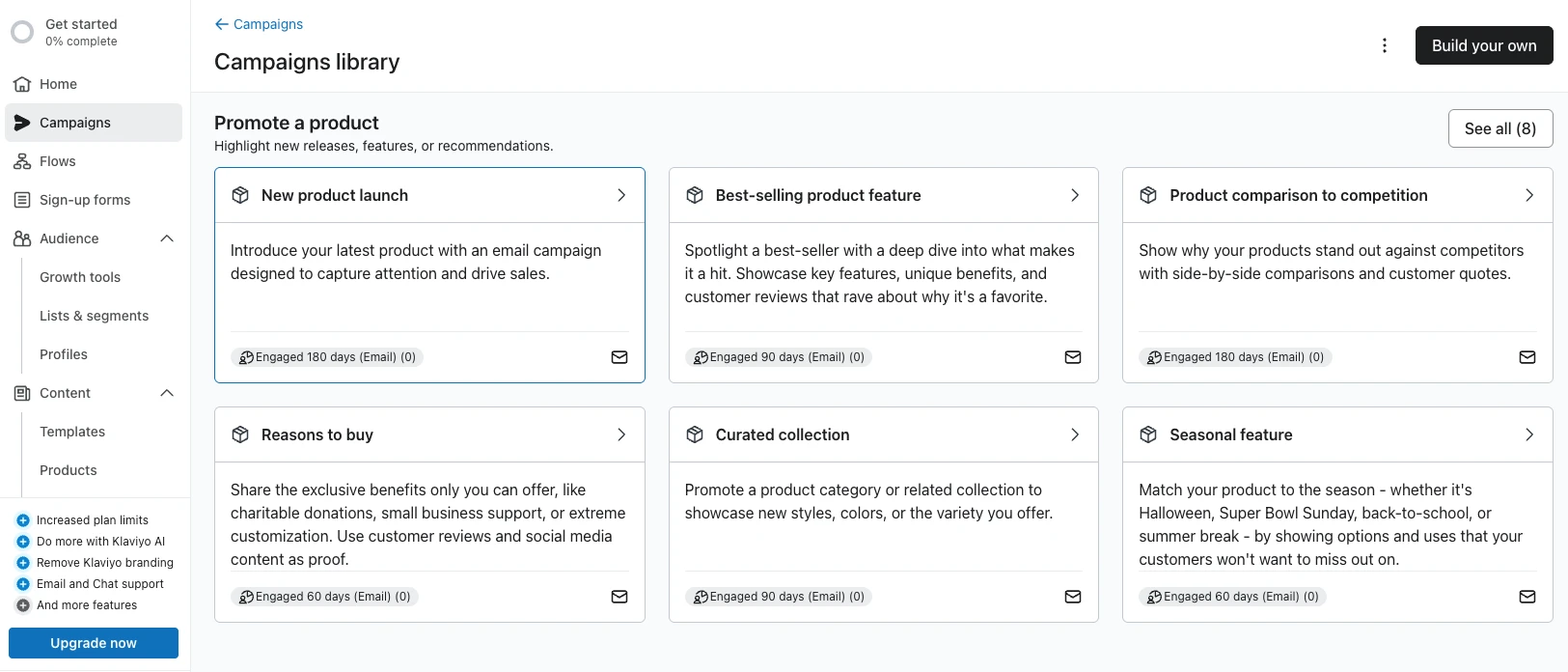
Klaviyo is an email marketing tool designed specifically for e-commerce stores. It has plenty of features that help store owners generate sales with email including automation triggers, e-commerce platform integration, advanced segmentation, and in-depth analytics. But it’s an expensive tool and the features will be overkill for many businesses without dedicated teams willing to put the time into using them.
Why choose Klaviyo?
Klaviyo is a good choice if you want the widest possible variety of e-commerce features.
It has Shopify triggers for session abandonment, which Mailchimp doesn’t. Plus, it has predictive segmentation which segments your list based on subscribers’ likeliness to buy. You can use someone being added to this list as a trigger for an email marketing automation, such as a product promotion, to get them over the line. It also has a large selection of pre-made automation templates.
Klaviyo also has strong e-commerce analytics and the ability to compare your metrics with peer group benchmarks in the app. Finally, the tool’s SMS features are available in 20 countries, which is more than Mailchimp’s 11.
Why choose another tool?
While ahead in e-commerce, Klaviyo is behind in other email marketing features. For example, you can’t add surveys to emails, create websites, or build landing pages. Plus, Klaviyo just upped the price of its already expensive plans, making it one of the costliest tools on this list.
Here’s how Klaviyo’s base pricing compares to Mailchimp.
500 contacts: Klaviyo costs $20 while Mailchimp costs $13
5,000 subscribers: Klaviyo costs $100 while Mailchimp costs $75
10,000 subscribers: Klaviyo costs $150 while Mailchimp costs $110
50,000 subscribers: Klaviyo costs $720 while Mailchimp costs $385
Campaign Monitor: Best for white labeling
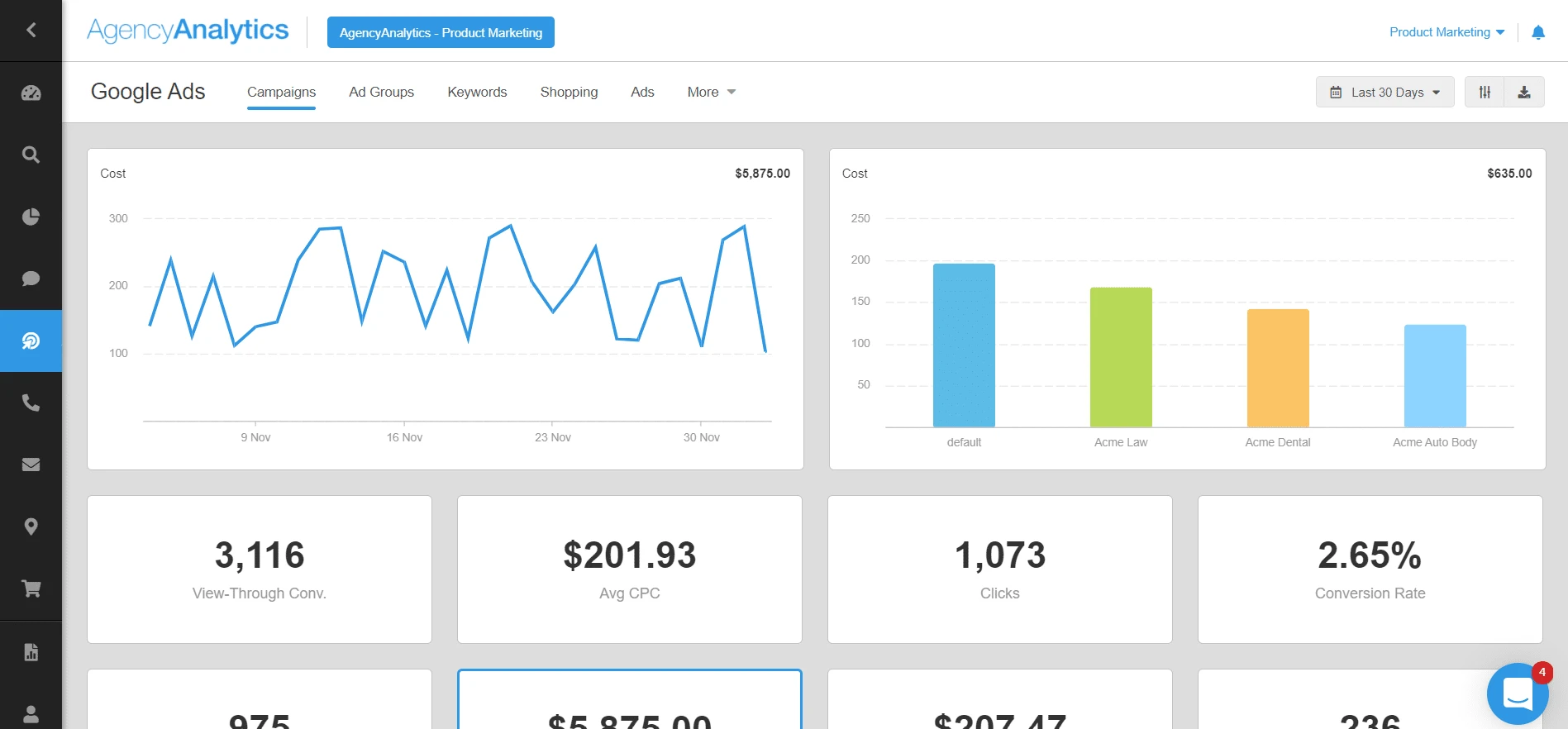
Campaign Monitor stands out thanks to its built-in transactional email and SMS marketing features plus its multi-account plan that lets agencies manage email marketing for multiple clients from a single account. The tool lacks a comprehensive website and landing page builder and the ability to collect payments for digital products.
Why switch to Campaign Monitor?
The most compelling reason to switch to Campaign Monitor in our view is to access the agency tools.
The real standout feature is the ability to add your branding to the Campaign Monitor dashboard to provide a proprietary experience to clients. You can also manage all your clients from a single dashboard, and access plenty of user permission options. Finally, it has custom billing so you set rates for each client and charge them in their local currency.
Why choose another tool?
If you don’t need the agency tools, there’s no real reason to switch to Campaign Monitor. It has most of the base features you need to run campaigns but the prices aren’t meaningfully lower and some of Mailchimp’s features are missing. Plus, the user interface looks more dated than other options on this list.
Here’s how Campaign Monitor’s pricing compares to Mailchimp for the base plan.
500 contacts: Campaign Monitor costs $12 while Mailchimp costs $13
5,000 subscribers: Campaign Monitor costs $70 while Mailchimp costs $75
10,000 subscribers: Campaign Monitor costs $109 while Mailchimp costs $110
50,000 subscribers: Campaign Monitor costs $369 while Mailchimp costs $385
ActiveCampaign: Best for multi-channel automations
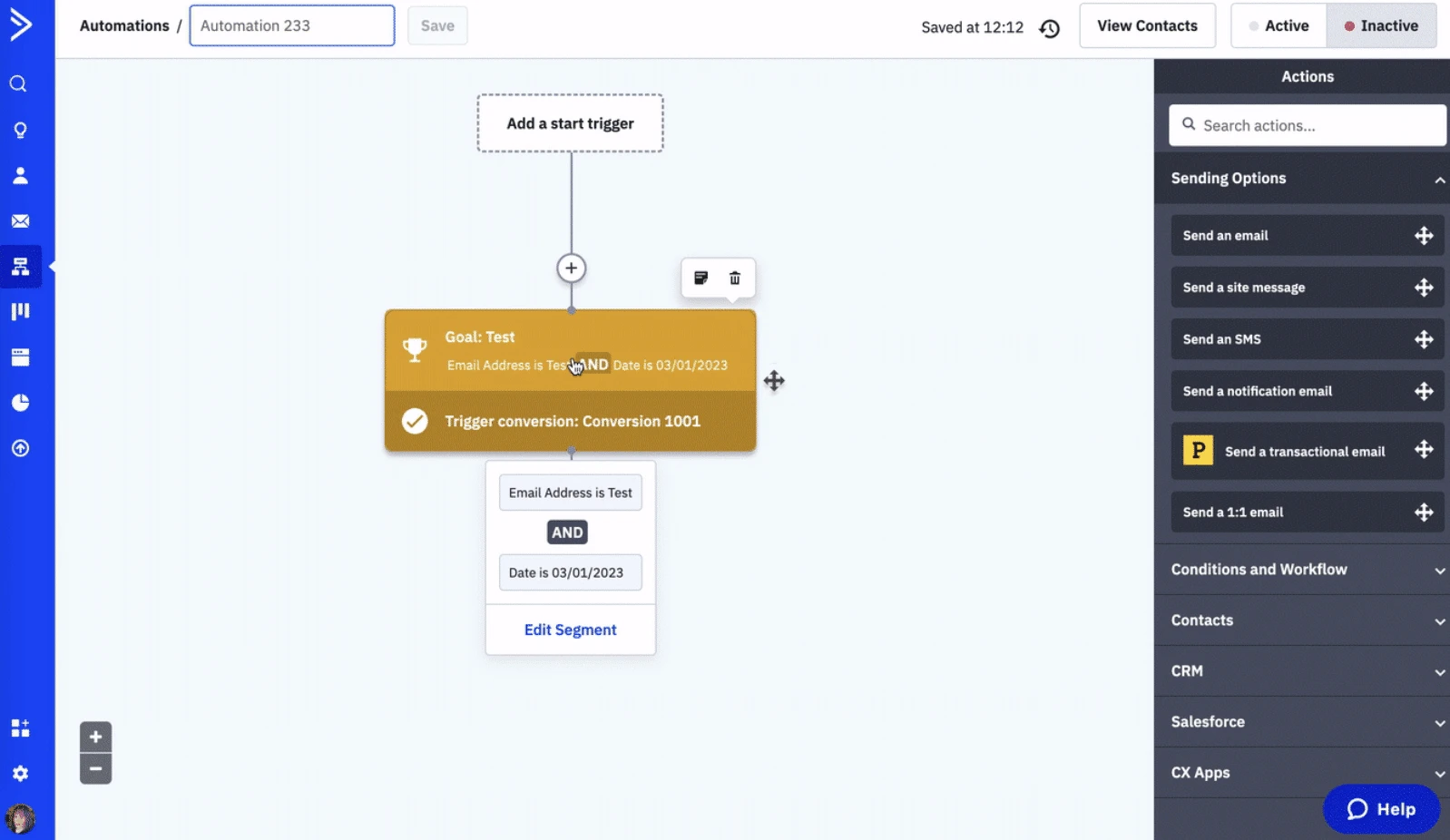
ActiveCampaign stands out due to its flexible automation builder, built-in transactional email, and a predictive sending feature that tells you the best time to schedule campaigns. The main downside is that some advanced features are only available in the expensive professional plan. It also lacks a website builder.
Why switch to ActiveCampaign?
ActiveCampaign lets you create more advanced automation workflows than Mailchimp and most other tools on this list. The highlight is that you can connect the tool with your website to enable website tracking and then automate actions based on browsing sessions.
You can also include SMS messages in automations, if you’re in a supported region. It also has a CRM and sales pipeline feature that lets you track how leads move down your sales funnel.
Why choose another tool?
More advanced features mean more costs and more time working out how to use them. If you find that Mailchimp’s existing automation features are enough, then plenty of other tools on this list will give you similar functionality at a much lower price point while having a higher ease of use.
ActiveCampaign also doesn’t have a website builder, so if your site is currently on Mailchimp, you’ll have to switch to another solution, further increasing your spend.
Here is how ActiveCampaign and Mailchimp pricing compares at various subscriber levels on the cheapest monthly plan.
1,000 contacts: ActiveCampaign costs $15 per month while Mailchimp costs $13
5,000 subscribers: ActiveCampaign costs $79 while Mailchimp costs $75
10,000 subscribers: ActiveCampaign costs $149 while Mailchimp costs $110
50,000 subscribers: ActiveCampaign costs $609 (Plus plan) while Mailchimp costs $385
Brevo: Best for infrequent senders with a large list
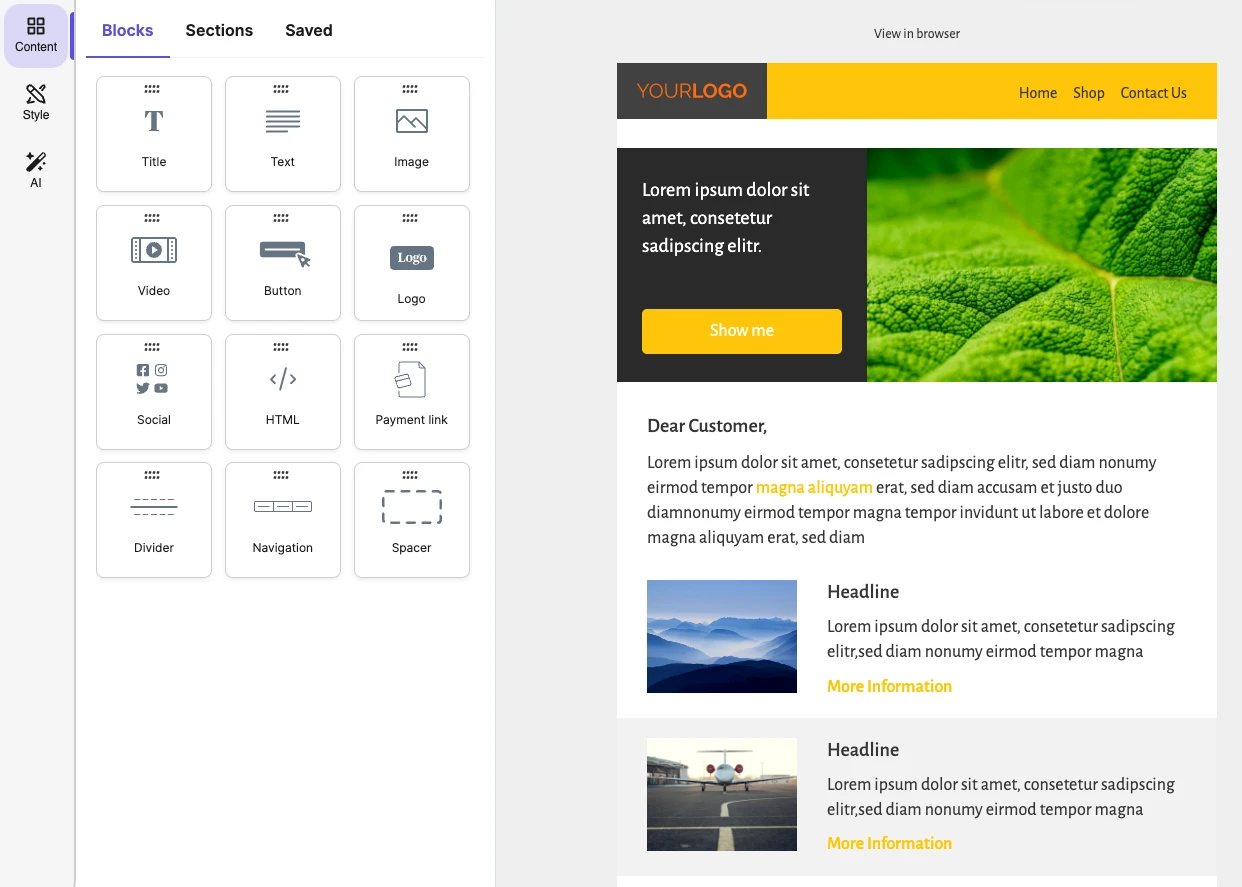
Brevo, formerly Sendinblue, stands out due to the ability to send push notifications, create WhatsApp and social media campaigns, and send SMS messages. Each plan also includes a sales CRM with features like pipeline management and scheduling. The downside is that the tool lacks a website builder.
Why switch to Brevo?
One compelling reason to switch to Brevo is its unique email volume-based pricing, which kicks in if you send 20,000 emails per month. Instead of your monthly costs depending on the number of contacts you have, it depends on the number of emails you send. You could save money if you have a large list that you send to infrequently.
Another plus point is Brevo’s omnichannel capabilities. As well as email, you can contact customers via SMS and WhatsApp, giving you more options for reaching customers where they are. It also has CRM features to help you track all your communication with each contact.
Brevo also has many of the essential email marketing features offered by Mailchimp such as automation, email templates, email campaigns, and more.
Why choose another tool?
You have to pay $12 to remove Brevo’s branding on the base plan. Depending on the size of your list, this could add a significant chunk to your cost. It’s also not something that is required by any other tool.
Tests by Emailtooltester found that Brevo’s email deliverability could use improvement, which would impact whether your subscribers actually see your emails or not.
Other tools are also better for specific use cases, whether that’s monetizing an audience, selling courses, or e-commerce marketing.
Brevo’s volume-based pricing makes it hard to compare to Mailchimp. Here are some examples of how much it costs to use the 2 tools.
Cheapest plan: Brevo lets you send 5,000 emails to 500 contacts for $12. Mailchimp lets you send 5,000 emails to 500 contacts for $13
Brevo lets you send 40,000 emails for $39, Mailchimp lets you send 50,000 emails to 5,000 subscribers for $75
Brevo lets you send 100,000 emails for $69, Mailchimp lets you send 100,000 emails to 10,000 subscribers for $110
Brevo lets you send 500,000 emails for $339 (Business plan), Mailchimp lets you send 500,000 emails to 50,000 subscribers for $385
Keep in mind that you must pay an additional $12 to remove the Brevo branding from your emails on the first 3 paid plans mentioned above.
Kit: Best for newsletter monetization
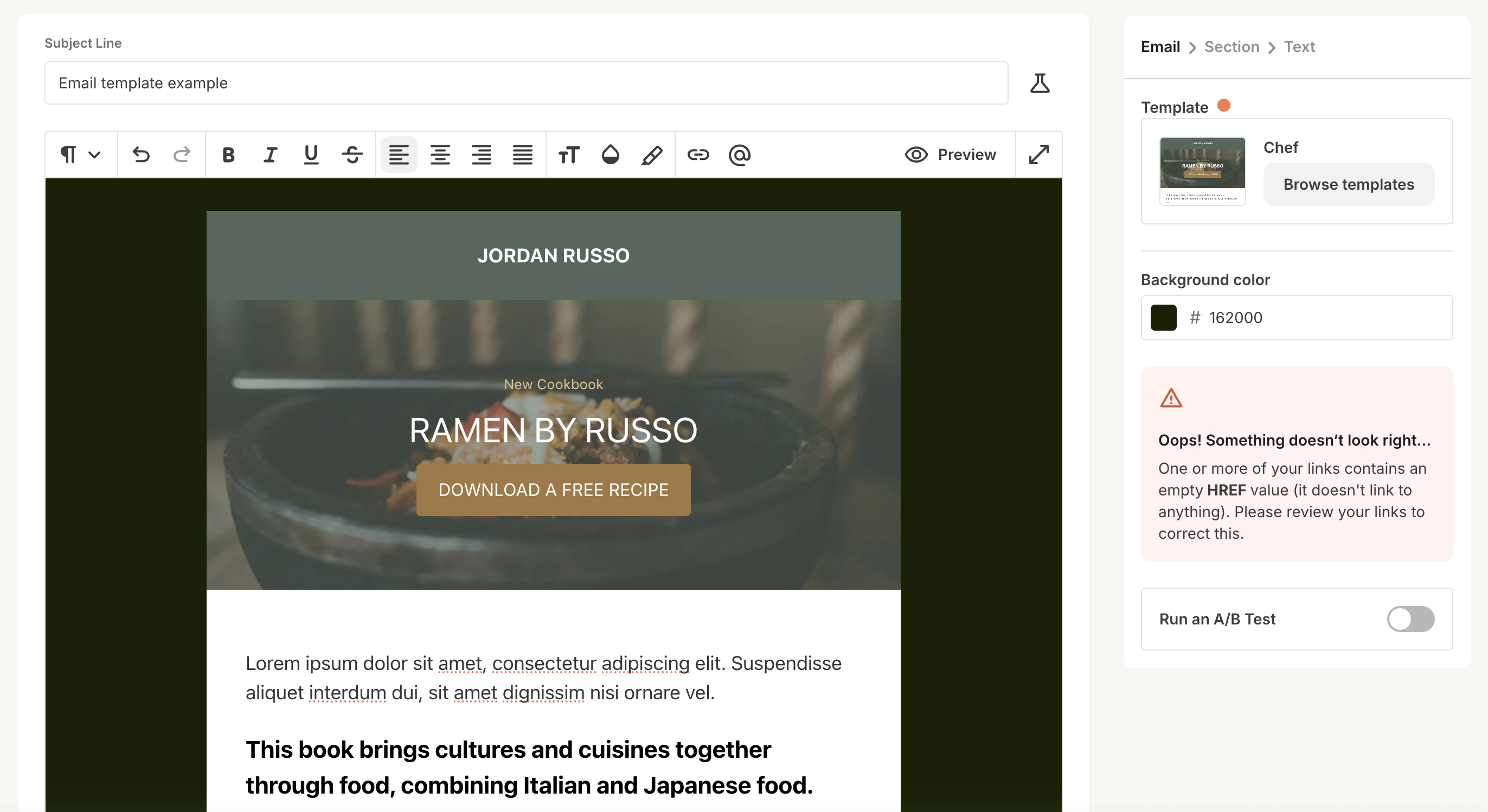
Kit, formerly known as ConvertKit, is an email marketing platform targeted at creators. Features creators will find useful include the Creator Network, a recommendation platform to help customers grow their contact lists; the Sponsor Network, which connects writers with brands looking to buy ads; and payment tools, which enable creators to sell digital products and subscriptions.
But, it lacks the depth of features on offer from Mailchimp, so you’ll need to check it has what you need before switching.
Why switch to Kit?
Consider Kit if you think you’ll use the creator tools. While Kit is slightly more expensive than Mailchimp, these features could make the price worthwhile for some. You also get unlimited email sending and multi-step automation on the base plan, which Mailchimp lacks.
Why choose another tool?
Kit is missing some features offered by Mailchimp, such as websites, advanced e-commerce marketing tools, AI creation, and social media scheduling, so you’ll have to check that it has what you need before switching.
Kit is also one of the more expensive tools on our list, so if you’re looking to save money, choose another option.
Here’s how Kit’s base plan compares to Mailchimp’s base plan at various pricing points. The contact points don’t match up exactly, so we’ve highlighted how many you get with each plan.
Cheapest plan: Kit costs $15 for 300 subscribers while Mailchimp costs $13 for 500
5,000 subscribers: Kit costs $79 while Mailchimp costs $75
10,000 subscribers: Kit costs $119 while Mailchimp costs $110
50,000 subscribers: Kit costs $379 for 55,000 subscribers while Mailchimp costs $385 for 50,000
Constant Contact: Best for social media posting and SMS
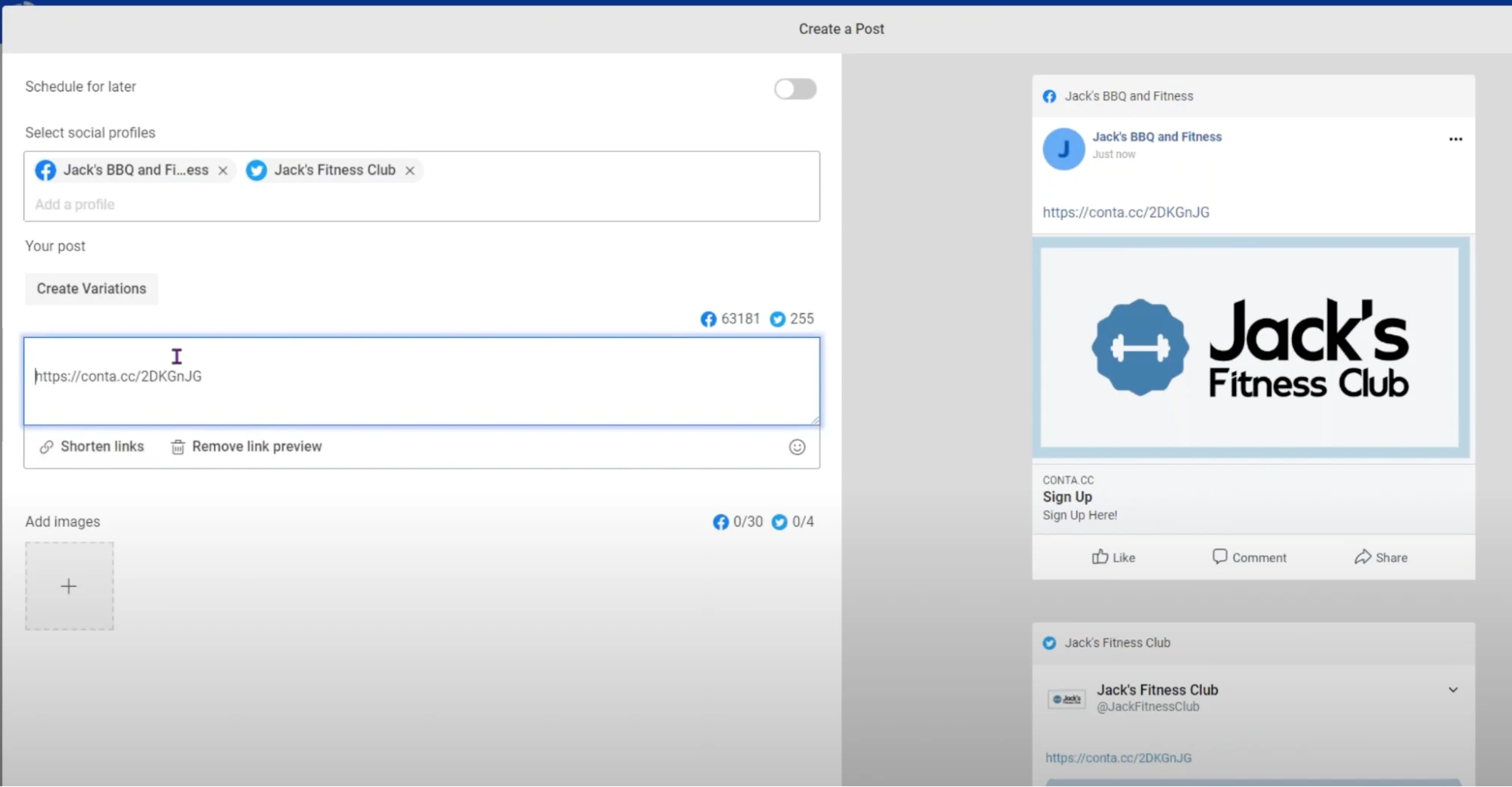
Constant Contact is an email marketing service provider with SMS communication features. It’s Mailchimp’s oldest competitor and it has some features not offered by other tools on this list, such as the social media scheduler. But its pricing is similar and the overall feature set isn’t as complete as Mailchimp or some other tools.
Why switch to Constant Contact?
There aren’t a ton of reasons to choose Constant Contact over Mailchimp. The pricing and features are similar and there’s no free trial to test the tool. But if you really dislike Mailchimp and want social media scheduling and SMS, then Constant Contact is an option.
Plus, we like that the tool offers phone support, which many of the other tools on this list don’t. It also has a ton of email templates and you may find the platform easier to use.
Why choose another tool?
The Constant Contact Lite plan is missing some essential features like segmentation, custom automations, A/B testing, and templates. Plus, in many cases, the features it offers, such as automations and the email builder, aren’t as advanced as comparable tools in Mailchimp.
The pricing is similar to, and in some cases more expensive than, Mailchimp, so you won’t save money like you could if you picked another tool. Constant Contact also has email-sending limits which some other tools don’t.
Here’s how Constant Contact’s pricing compares to Mailchimp. We choose the base plan with monthly pricing. Features are different on each plan.
500: Constant Contact costs $12 while Mailchimp costs $13
5,000 subscribers: Constant Contact costs $80 while Mailchimp costs $75
10,000 subscribers: Constant Contact costs $120 while Mailchimp costs $110
50,000 subscribers: Constant Contact costs $430 while Mailchimp costs $385
Substack: Best for free newsletters
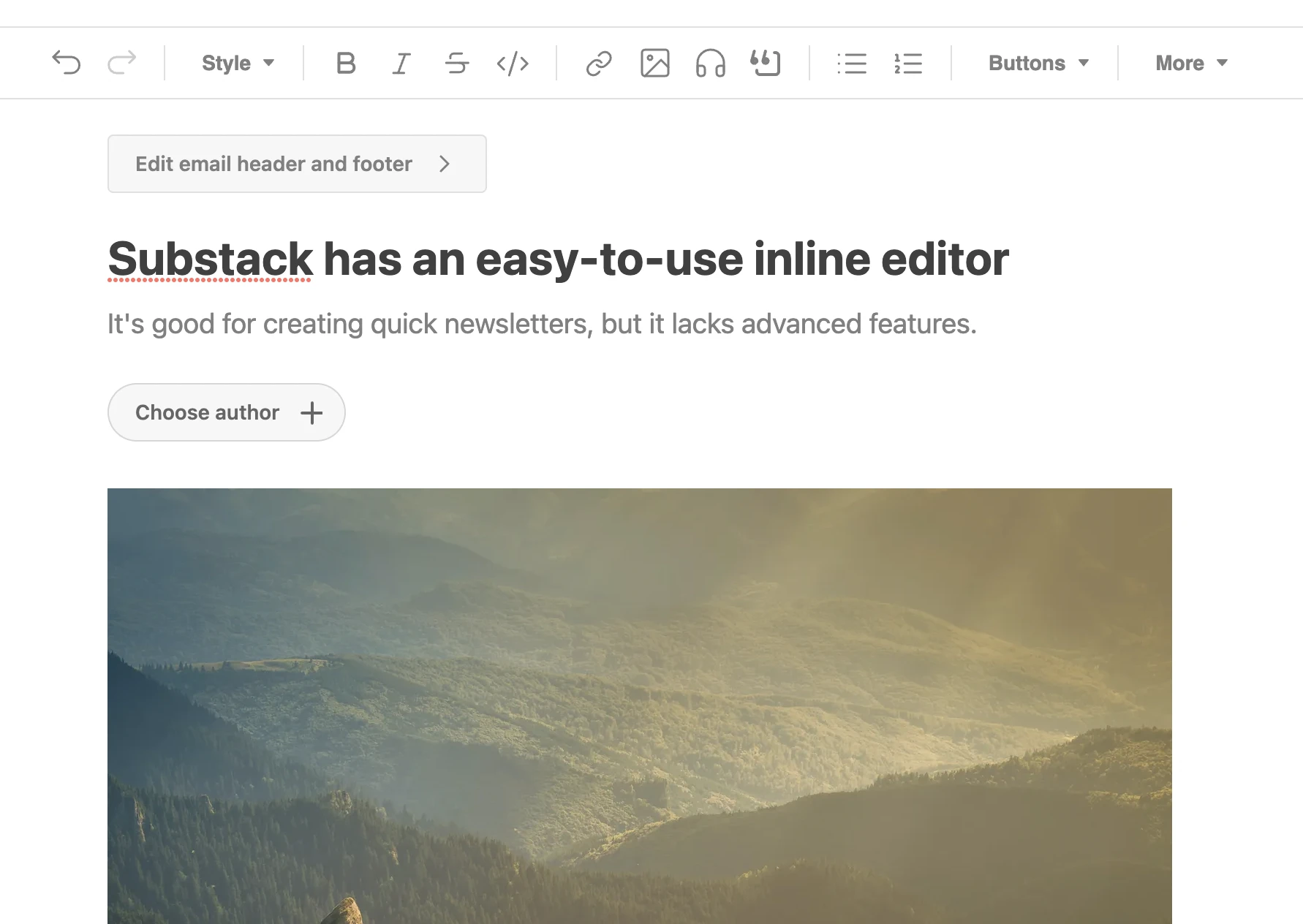
Substack is an email newsletter platform with a set of features aimed at newsletter writers. The tool makes it easy for writers to start a newsletter and grow their list. The downside is that Substack lacks almost all the functionality you need for email marketing. It also takes a large percentage of any paid newsletter sales, meaning other options on our list can be far more profitable ways to run a paid subscription.
Why switch to Substack?
Choose Substack if you want the easiest possible way to start an email newsletter, publish it online, and send it to your subscribers. It also provides access to audience growth tools such as social media features and recommendations. Plus Substack is free until you create a paid newsletter, when you pay a 10% commission.
Why choose another tool?
Choose another tool if you want access to email marketing features like automations, the ability to sell products from your newsletter, and integrations.
While Substack has an easy-to-use rich text email editor, it also lacks any advanced email design features, meaning your design choices are extremely limited.
Substack is completely free to use unless you have a paid newsletter, at which point you pay a 10% commission (plus credit card fees) on each sale.
Here’s how the Substack commission would look at various paid subscriber points for a $10 per month newsletter:
50 paid subscribers would cost $50
100 paid subscribers would cost $100
1,000 paid subscribers would cost $1,000
This is much more than you’d pay if you ran your paid newsletter on another platform.
However, you may find that Substack’s audience growth tools, conversion features, and access to an audience known to be willing to pay for newsletters, make the cost worth it.
3 final steps for choosing a Mailchimp competitor that impresses
Choosing the best email marketing software for you isn’t easy. There are tons of options, many of which have relatively similar features.
With that in mind, we recommend following these 3 steps when choosing a Mailchimp alternative.
Think of the features you need and then narrow down the tools based on these criteria
Consider your budget and remove any platforms that cost too much
Sign up for some free trials to test out the email marketing solutions still on your list
If you already use Mailchimp, also factor in how easy it will be to switch, the features you like to use, and your reasons for wanting an alternative.
If you want to skip the above steps and sign up for the platform with the highest deliverability, a wide feature set, and the most affordable plans, then MailerLite is for you. Hit the button below to sign up for free to test the software today.
Try MailerLite today
Sign up for a free forever account to see for yourself why MailerLite is the best and most affordable Mailchimp alternative.
